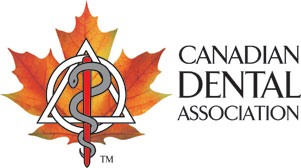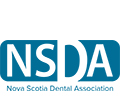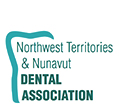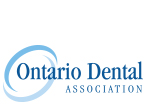1899-1902 Boer War
The history of the Royal Canadian Dental Corps can be traced back to the Boer War in South Africa from 1899 to 1902. For the first time, Canadian dental surgeons operated in a theatre of war. They were attached to the Canadian Army Medical Corps but had no Army status during this time. They accompanied the Canadian Troops in operations in the Transvaal, the Orange River Colony and the Cape Colony.
The great number of soldiers who presented with dental emergencies established the fact that dental services in the field were indispensable. At the Canadian Dental Association (CDA) meeting at McGill University in 1902, Doctor Ira Bower of Ottawa presented a paper entitled Dentists in the Army. After the paper the CDA passed a resolution favouring the creation of a regular army dental staff. Subsequently the CDA pressed the government of Canada to form a Regular Army Dental Staff as a distinct branch of the service. This effort met with success when by General Order No 98, dated 2 July 1904, an establishment of 18 Dental Surgeons in the Canadian Army was authorized.
1915-1918 World War I
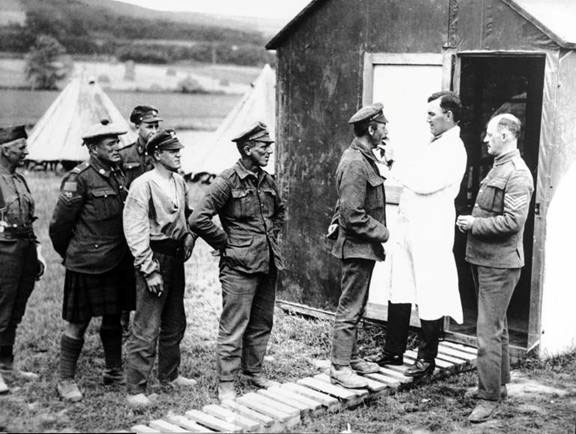
On 13 May 1915 the Canadian Army Dental Corps (CADC) was formed as a separate corps within the Canadian Army. Canadian dental officers were attached to the field ambulances and did wonders in the forward area, including even the provision of gold plates. A British Army consultant, Sir Cuthbert Wallace, would later state in 1918 that, “the Canadians had a very perfect dental organization” and suggested that the British service copy the Canadian model which enabled them to provide advanced treatment in the forward areas.
In 1915 the first Canadian Military Dental Clinic was established in a stable at the Exhibition Grounds in Toronto. This was the first Military Dental Clinic in the British Empire.
The CADC began operations overseas in July 1915 with 30 Dental Officers and 74 other ranks - a ratio of 1 dentist for every 1400 personnel. By December 1918 over 2.2 million dental treatments were performed. This included 97,000 treatments for British troops and 50,000 treatments for ‘trench mouth’. Another 1.4 million treatments were provided in Canada.
When the war ended on 11 November 1918, the CADC strength had increased to 223 officers and 459 other ranks serving in stationary hospitals, field hospitals, and field ambulances in Great Britain, France and Belgium. Seven officers and ten other ranks had died in action. In addition, 4 medals for Meritorious Service and 10 Orders of the British Empire were awarded to CADC personnel.
1939-1945 World War II
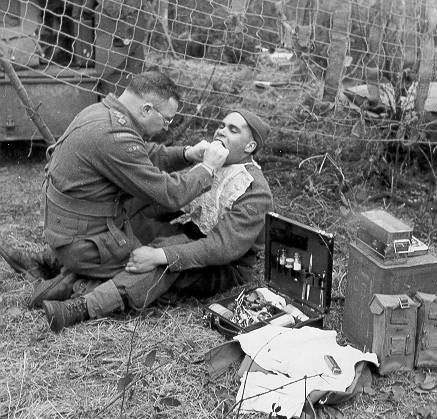
Between the two World Wars the Dental Corps was little more than a number of individual dental officers scattered thinly throughout the Canadian Army.
In 1938 the Canadian Dental Association then successfully lobbied the Minister of National Defence to create an independent defence dental service. Subsequently the Canadian Army Dental Corps was replaced by the Canadian Dental Corps (CDC) under the command of a 'Chief Dental Officer'. The CDA nominated Doctor Frank Lott to be the Director of the new CDC and he was subsequently appointed Lieutenant Colonel and Director Dental Services. The word ‘Army’ was removed from the name in recognition of the tri-service role of the Dental Corps.
The use of dental records for forensic purposes, especially in identifying war casualties, came into prominence during WWII. Many fatalities were identified who lacked any other means of identification. Dental forensic techniques were also used to identify deserters and determine cases of fraudulent enrolment.
When the Canadian Women's Army Corps was formed in 1941, the first female dental assistants were enrolled. Several hundred of these women were employed in clinics in Canada, freeing up male dental assistants for overseas service.
At the end of WWII the Canadian Dental Corps had a strength of over 5000 members, over half of whom had deployed overseas. 14 Dental Officers and 19 Dental Technicians gave their lives on active service during WWII.
The outstanding performance of the CDC during the war convinced the authorities that it should be kept alive after demobilization. In October 1946 the Canadian Army was reorganized and for the first time the dental corps became a component of the regular force. In January 1947 His Majesty King George VI granted the Royal Warrant to the Canadian Dental Corps in recognition of outstanding service; thus, the CDC became the "Royal Canadian Dental Corps (RCDC)."
1946-1968 Northwest Highway System
In 1942 the Canadian and US governments approved the construction of a highway through northern British Columbia and the Yukon Territory to Alaska as a response to the Japanese threat of WWII. The 1,523 miles of road, named the Alaska Highway, was built by the US Army Engineers over a period of eight months. In April 1946 the 1,200 miles of gravel road in Canada was turned over to the Canadian Army for maintenance.
The first RCDC clinic was opened in Whitehorse on 8 April 1946 in a military hospital taken over from the US Army, with the task of providing dental support for all service personnel, civilian employees and dependants scattered along the Highway. In July a second team left Dawson Creek in a mobile dental clinic to provide a travelling dental service for personnel in the maintenance camps and repeater stations. Their task was all the more interesting during winter time, with temperatures approaching –60OC.
By 1948 many of the repeater stations and maintenance camps had been civilianized, reducing the need for a mobile team, and air transport was becoming more available. Part-time clinics were opened at RCAF Station Fort St John and in the hospital at RCAF Station Fort Nelson in BC. For the next decade the RCDC presence in the north grew, but eventually the Highway was turned over to civilian agencies and the RCDC withdrew in 1968.
1950-1957 Korean War
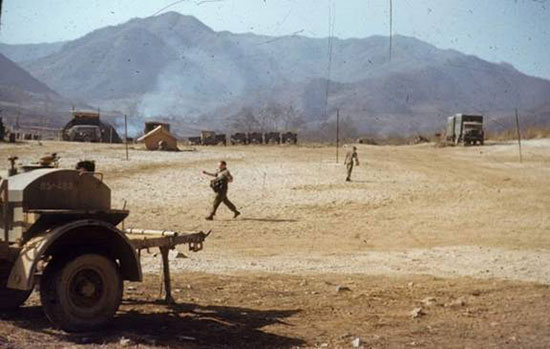
In early August 1950 the Canadian government decided that Canada would participate in the United Nations action in Korea. The Director General Dental Services proposed an independent dental unit of 14 officers and 52 other ranks to provide dental services to the Canadian brigade; the War Establishment Committee initially approved two officers and six other ranks, establishing 20 Canadian Field Detachment. Eventually the establishment was increased to 11 dental officers and 40 other ranks and redesignated 25 Field Dental Unit.
Captain WO Mulligan describes service in Korea, “Everything was under canvas except the dental clinic itself. The dental clinic was in ‘B’ echelon where the canteen was located, everybody was glad to get back for “shopping” plus a few fillings.” He also noted that the Canadian dental service seemed superior to that of all the other nations. Challenges included ten year old tires on the mobile dental clinics for which there were no spares, a lack of kerosene stoves in the clinics and unserviceable generators led the dental officers to keep their local anaesthetic in their tents at night, and the tempo of the war increased and the dental teams were exposed to artillery shelling. During the summers the heat was oppressive, dust was a menace to movement, biting insects plentiful, the water supply was limited, which made cleanliness a problem, and the overwhelming odour of rice paddies and “honey wagons” made life difficult. During the rainy season the roads and hard standing areas became a sea of mud.
From the time the first dental detachment arrived in Pusan on 7 November 1950 until the last detachment departed Korea on 1 July 1957, 43 officers and 85 other ranks served in Korea, continuing the tradition of a high standard of mobile dental service to Canadian troops in the field.
The participation of the RCDC in the Korean War was of enormous importance to the growth of the corps. During this war the strength of the Canadian Forces more than doubled and a similar increase in the size of the corps occurred. This permitted an improved rank structure and better career prospects for dental personnel, which made service in the corps more attractive. In addition, the standard of service provided in Korea under difficult conditions enhanced the reputation of the corps with future senior army officers and, as a result, facilitated acquiring desired improvements in dental care delivery.
1956-1967 United Nations Emergency Force Middle East (UNEF)
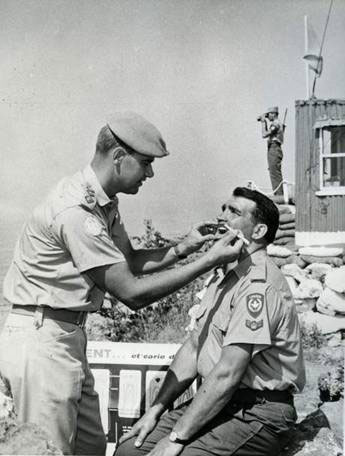
In response to hostilities between Egypt and Israel in 1956 that threatened to disrupt the freedom of navigation through the Suez Canal, the United Nations deployed a police force, commanded by a Canadian Major-General, to police the zone between opposing forces and to prevent recurrence of fighting. Canada provided a self-contained battalion size force, augmented by ordnance, army service corps, dental and medical detachments, that was able to operate independently from a Canadian Base. Over one hundred RCDC personnel served with the UNEF detachment during its ten years of operation. In 1967 Egyptian President Nasser directed all Canadian troops to leave, with only 48 hours notice, turning what had been an orderly close-out into relative chaos.
1963-1994 United Nations Forces in Cyprus (UNFICYP) - (Op SNOWGOOSE),
In 1963 Canada offered military support to the newly organized United Nations peacekeeping operation in Cyprus. The first dental detachment arrived in Nicosia in March 1964. When the last dental team left in 1994 they were working out of a hard standing air-conditioned dental clinic with two fully equipped operatories. A total of 59 dental teams served in Cyprus.
1968 Canadian Armed Forces Unification
The current iteration of the Canadian Armed Forces dates from 1 February 1968, when the Royal Canadian Navy, Canadian Army, and Royal Canadian Air Force were merged into a unified structure. The impact on the operations of the Dental Corps was minimal, as RCDC personnel already provided dental care to all three services, but the RCDC was reorganized into the Dental Branch, renamed the Canadian Forces Dental Services (CFDS), and a new cap badge was issued. In his letter of congratulations to the RCDC on the occasion of the 50th anniversary of the Corps, Mister Hellyer commented that, “the tri-service role of the Corps since 1939 has permitted the ready adoption of new techniques and equipment and has resulted in a high standard of dental treatment to all three services on an equitable basis. It has thus required little modification in order to adapt to the unification of the Canadian Forces.”
1973 - 1979 United Nations Emergency Force Middle East (UNEF II)
In 1973 the United Nations established a new mission in the Middle East to supervise the cease-fire between Egyptian and Israeli forces and, after 1975, to supervise the redeployment of Egyptian and Israeli forces and to man and control the buffer zones. The Dental Corps deployed dental teams to Egypt in support of UNEF II. The clinic gradually improved, having started out in a tent, then moved to a race-track observation tower in Heliopolis (a Cairo suburb) and finally to an acceptable building in Ismailia. The UNEF II dental teams also traveled to the Golan Heights to provide dental care to UNDOF personnel, utilizing a Mobile Dental Clinic permanently set up for this purpose.
1990-91 Gulf War (Op FRICTION, Op SCALPEL)
Canada deployed three HMCS ships and a CF-18 fighter jet squadron, peaking at 2,700 personnel in theatre, in response to the Iraqi invasion of Kuwait. The three Canadian ships, representing less than 10% of the multi international force, accounted for over 25% of the hostile vessel interceptions. The dental team aboard HMCS Protecteur wasthe first CAF dental team to sail to a war zone since the Korean War. The CFDS also deployed an Oral and Maxillofacial Surgeon and OMFS assistant to the Persian Gulf on board USNS Mercy, a 1000-bed US Navy hospital ship. The USNS Mercy and HMCS Protecteur operated in different geographic areas within the Persian Gulf. Both ships’ dental teams were rotated after several months on station.
Another dental detachment was deployed with elements of 1 Canadian Field Hospital, in support of the Royal Army Medical Corps 32 Field Hospital. Their original task was to provide dental care to for the hospital and prisoners-of-war processed by the facility, but due to a lack of patients they concentrated their efforts on treating Allies who had deployed with minimal dental treatment capability.
Dental Officers in Lahr trained as surgical assistants at the hospital preparing for an influx of casualties that never materialized.
1992 Somalia (Op DELIVERANCE)
The Canadian Airborne Regiment, totalling 1000 troops, deployed to Somalia in December 1992 to participate in Op DELIVERANCE, a United Nations humanitarian aid mission. A dental team accompanied the regiment, working out of a SEV shelter that had been detached from the truck. A second dental team arrived in theatre aboard HMCS Preserver. Captain Glen Joyce received the CDS Commendation for his humanitarian efforts, training local health care providers in dental treatment at Mogadishu’s only hospital.
1992-2004 Former Republic of Yugoslavia (Op HARMONY, Op CAVALIER, Op MANDARIN, Op ALLIANCE, Op PALLADIUM, Op KINETIC)
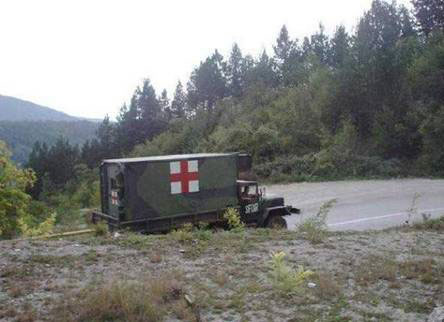
Over 40 Canadian military dental teams, normally consisting of a Captain dental officer and a Sergeant dental technician, experienced a six-month tour with the United Nations and later as part of NATO in the Former Republic of Yugoslavia, with up to three teams present in theatre at any given time.
During this operation, one or two dental teams were deployed, depending on the number of Canadian troops in theatre. CFDS personnel were located in various camps and would visit other camps with the Mobile Dental Clinic to provide dental treatment in location. Some camps had the Air Transportable Dental Kits (ATDK) dental equipment set up in trailers or under canvas, ready for visiting dental teams to utilize. In the case of dental emergencies, patients were evacuated to the location of a dental team.
Ice Storm (Op RECUPERATION), 1998
On January 4, 1998, an ice storm of epic proportions began in east central Canada. After about 80 hours of intermittent freezing rain and drizzle - nearly double the normal annual total - the icefall stopped on January 8 and the temperature dropped sharply. The weight of ice brought down millions of trees, the roofs of large buildings such as barns and arenas, thousands of kilometres of power lines and telephone cables, 130 major transmission towers, and about 30,000 wooden utility poles. More than 1 million households lacked electricity, which meant no lights, central heating, running water, refrigeration or hot meals. Twenty-five people died, most of them from hypothermia.
As a result of fallen trees, broken power lines and rivers of ice blocking the roads, emergency vehicles could hardly move. The provinces of New Brunswick, Ontario and Quebec requested aid from the Canadian Forces and Op RECUPERATION began on January 8. It was the largest deployment of troops ever to serve on Canadian soil in response to a natural disaster and the largest operational deployment of Canadian military personnel since the Korean War.
CF members from across Canada helped provincial and municipal workers clear roads, rescue people and animals trapped by storm wreckage, evacuate the sick, shelter and feed about 100,000 people frozen out of their homes, and ensure that farmers had the generators and fuel required to keep their operations going. Military engineers and technicians worked around the clock with hydro and telephone crews to repair and replace downed transmission towers and utility poles.
At the height of the crisis, Op RECUPERATION involved 15,784 deployed Army, Navy and Air Force personnel, including 3,740 Reservists. All three field dental platoons were deployed to the affected region to provide dental care to the numerous military personnel working to restore services. Other Dental Corps personnel, who were originally in St Jean on language training, also assisted by augmenting dental platoon staff until power was restored to the St. Jean and Longue Pointe clinics. Treatment was provided from mobile dental clinics until base dental clinics could reopen.
1998 Dental Forensic Team Investigation SwissAir 111 (Op PERSISTENCE)
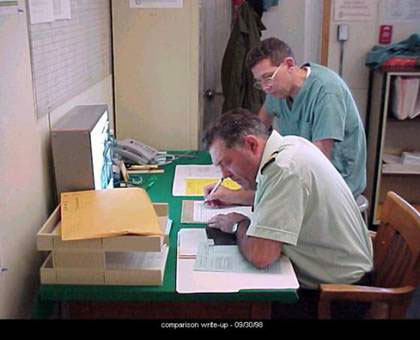
In September 1998, SwissAir Flight 111 crashed near Peggy’s Cove, NS. All 229 persons on board were killed. Answering an urgent call from the Nova Scotia Chief Medical Examiner’s Office, the CFDS rapidly and effectively mobilized a contingent of over 30 personnel from several bases across Canada. This team, supplemented by 2 mobile dental clinics and a significant amount of equipment and supplies, deployed to CFB Shearwater in support of the Operation PERSISTENCE; the intent of this mission to both recover what remained of the aircraft in hopes of determining the cause of the crash, and to recover and identify the remains of the passengers and crew. Throughout September and October of 1998 a total of 54 dental personnel were tasked to effect dental identifications of the victims.
During the operation, 313 post mortem specimens were processed, with over 2000 radiographs taken. 198 ante mortem dental records were received from around the world and compiled into a standard format. By the end of the operation, 149 positive identifications had been made, 102 of them by the dental team. Eventually DNA testing provided the identification of all remaining passengers and crew, and confirmed the 100% accuracy of the dental identifications.
For its outstanding work during those difficult moments, the Canadian Forces Dental Services Forensic Team was honoured with the Canadian Forces Unit Commendation in May 1999 and a Treasury Board Commendation in 2000.
1999 Kosovar Refugees (Op PARASOL)
In response to the refugee crisis of ethnic Albanians fleeing Kosovo, Canada volunteered to provide up to 5000 refugees with temporary sanctuary at several CF bases in Canada. Citizenship and Immigration Canada (CIC) was the lead Canadian organization for this endeavour, while CF involvement was targeted towards providing assistance where civilian shortfalls were identified or were anticipated to exist.
While it was deemed necessary for the CF to supply some initial medical support at the involved bases, it was felt that they were located within reasonable proximity to adequate sources of civilian dental support. 2 Field Ambulance in Petawawa deployed a dental team and mobile dental clinic to Trenton as a precaution, but other CFDS assets were not initially committed pending an official tasking to provide support. CFDS dental clinics provided some dental care to these refugees and were also instrumental in liaising with local dental providers to ensure adequate dental resources were available.
2000 East Timor (Op TOUCAN)
Operation TOUCAN was the CF response to INTERFET, a United Nations operation to restore peace and provide humanitarian aid in East Timor. The initial Canadian Task Force to East Timor included approximately 250 sailors from the Canadian naval replenishment ship HMCS Protecteur, a 250-strong light infantry company group largely from the 3rd Battalion, Royal 22ième Régiment, and approximately 100 air force personnel with two CC-130 Hercules transport aircraft from 8 Wing Trenton, Ontario.
The Dental Team on the HMCS Protecteur provided dental support to the naval and air elements of the INTERFET force deployed at sea. They treated military personnel from Australia and New Zealand, as well as members of the 3 R22eR while anchored off the south coast of East Timor near Zumalai. Members of the 3 R22eR were transferred over to the ship via helicopter or boat and treated as required.
2001-2014 Afghanistan (Op APOLLO, Op ATHENA, Op ATTENTION)
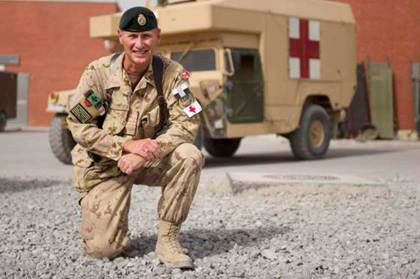
In October 2001 Canada commenced Operation APOLLO, its contribution to the US led operation against terrorist elements in Afghanistan. The campaign included sea, land, and air forces. At any given time, there were three to five Canadian naval vessels on duty. Dental teams were deployed with HMCS Preserver and HMCS Protecteur.
In 2002, further to the fight against terrorism, Canada deployed 600 troops into the Kandahar region of southern Afghanistan. A dental team was deployed with 1 Canadian Field Hospital to provide emergency dental care to the Canadian force. The harsh climate with extreme temperatures (usually in the 40 Celsius range), dry dusty conditions and frequent high winds posed a challenge. During this six-month rotation, the dental team was called upon to fulfil its secondary roles of assisting the medical teams with mass casualties and of dental forensic identification when a friendly fire incident took four lives and wounded eight others.
One year later Canada once again committed troops to Afghanistan. 2,000 Canadian troops, including a dental team, deployed to Camp Julien near Kabul in August 2003.
The next rotation saw the Canadian Contingent downsized from 2,000 to 600 troops. Camp Julien became multinational, housing American, Belgian, Hungarian, Slovenian and Norwegian troops. Throughout the tour the Dental Corps teams treated patients from every nation on the camp, civilian employees (Canadian, Nepalese, Indian), Afghan interpreters, civilians from the Canadian, British and American embassies, and British troops flown in from Mazar e Shareef for treatment.
In late 2005 the Canadian Contingent moved back to Kandahar and became the lead nation for a multinational hospital, along with British and Dutch forces. The dental personnel on the ground found their patient pool had expanded from 600 to many thousands, and they spent long hours providing the most basic emergency care until other dental resources arrived. There were three dental teams in place - an oral and maxillofacial surgeon and a general dentist from Canada and a general dentist from the Royal Army Dental Corps, along with their dental technicians. This tour was the first time a Canadian Forces OMFS was deployed in the field: in the Gulf War a CFDS OMFS team had been deployed on a US hospital ship).
Op ATTENTION is the name assigned to Canada's participation in the NATO Training Mission-Afghanistan which delivered training and professional development support to the Afghan National Security Forces. Dental Corps personnel adapted a Health Canada curriculum to create a six-month mid-level provider program and delivered it to ANA dental personnel, enhancing access to care for ANA soldiers. Our Dental Corps personnel also advised and mentored their ANA counterparts at the Armed Forces Academy of Medical Sciences in Kabul and developed a Continuing Dental Education program, which then was administered by ANA personnel upon our departure from Kabul. Finally, Dental Corps personnel in Kabul and Ottawa assisted the Canadian Dental Association in facilitating the creation of a national professional body, the Afghanistan Dental Association. Once recognized by the Afghan government, the CDA also sponsored the Afghanistan Dental Association’s membership and participation in the FDI World Dental Federation (FDI).
2003 Okanagan Forest Fires (Op PEREGRINE)
Op PEREGRINE was the military response to a request for assistance by the Government of British Columbia in August 2003. At the height of the crisis, about 800 fires were burning in B.C. and tens of thousands of people had been ordered out of their homes. Eventually more than 2,200 Canadian Forces personnel were involved in fighting five of the worst fires over a 45-day period.
The 1 Field Ambulance Dental Platoon was deployed on Op PEREGRINE to provide emergency dental services to the CF personnel in location. After an interesting drive through the Rocky Mountains in a Mobile Dental Clinic, they set up in the center of the many fires.
Many of the reservists present had deployed on very short notice, without the benefit of dental screening or treatment, and appreciated being able to access dental care in their camp. When not providing Role 1 dental care, the Dent Techs were often employed as ambulance drivers to bring medical patients to the Field Ambulance location.
2004 United Nations Stabilization Mission in Haiti (MINUSTAH) (Op HALO)
From June to August of 2004, the Canadian Forces deployed about 500 personnel and six CH-146 Griffon helicopters to Haiti, as part of Operation HALO, to assist the United Nations sanctioned multinational force in bringing stability to the country.
A dental team was deployed to Haiti with Op HALO to provide dental services to CAF members, as well as to RCMP and Canadian civilian employees. The detachment worked under canvas as part of the Advanced Surgical Team facility. Severe rainstorms flooded the tents on several occasions, but no damage was done to the equipment and the mission continued uninterrupted.
2008 Canadian Health Measures Survey
In 2008 Health Canada and Statistics Canada conducted a health survey of the Canadian population. For the first time, oral health was included as part of the survey. 1 Dental Unit provided 14 dental officers, for a total of roughly 1000 person-days over a two year period, to act as calibrated examiners in support of this landmark activity.
In 2009 the Canadian Dental Association (CDA) presented a CDA Oral Health Promotion Award to the CFDS for this activity. When presenting the award, Dr Don Friedlander, President of the CDA, announced, “This award is being conferred on the Canadian Forces Dental Services for its outstanding contribution to the planning of the oral health component of the Canadian Health Measurers Survey (CHMS), organized by Statistics Canada. It also is being conferred for CFDS’s execution, from 2007 to 2009, of the clinical oral examinations that were part of the CHMS. The CFDS team of carried out clinical oral examinations at 15 sites on over 6,000 Canadians. In total, they contributed over 1,000 person days to this project. In addition, CFDS is a member of the Oral Health Steering Committee advising on all aspects of the oral health module of the study. The oral health survey component of the CHMS is the first national survey of oral health in Canada to gather clinical data according to internationally recognized epidemiological methods. This national survey is truly monumental in advancing the oral health of Canadians, and its results are eagerly anticipated for dentistry.”
2010 Earthquake in Haiti (Op HESTIA)
On 12 January 2010 a magnitude 7.0 earthquake near Haiti killed more than 220,000 people, left many thousands injured or permanently disabled, and left 1.5 million homeless.
Canada has a special relationship with Haiti, particularly French-speaking Canada. The Haitian diaspora in Canada is approximately 100,000 people, 90% of it in Montreal. French and Creole are the two main languages spoken in Haiti, so French speaking Canadian military personnel can interact directly with the local population. Canada had deployed military forces to Haiti many times in the past for peacekeeping or humanitarian aid.
Canada’s response included the Disaster Assistance Relief Team (DART) consisting of medical and engineering troops, the destroyer HMCS Athabaskan and frigate HMCS Halifax, a battle group from 3 Battalion, Royal 22nd Regiment (3 R22eR), 6 Griffon helicopters, and a 100 bed field hospital.
In response to the earthquake, the Department of Foreign Affairs and International Trade (DFAIT) also initiated a Disaster Victim Identification (DVI) mission to identify the remains of Canadian citizens, to allow them to be repatriated to Canada. Due to transportation and accommodation constraints each DVI team was restricted to 6 members: 4 RCMP forensic specialists, a single forensic pathologist and single CFDS dental officer. Under canvas supplied by the CAF and in the sweltering heat, the teams worked together to complete medical and dental autopsies charting the dentition and taking dental radiographs of the jaws. Three teams deployed over an 8-week period. Ante mortem records were processed through 1 Dental Unit Det St Jean.
2011 Op NANOOK
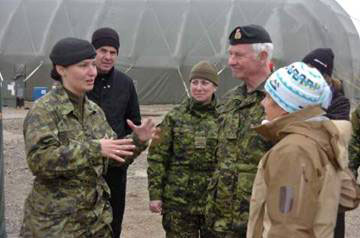
Operation NANOOK ’11 represented the first time a Canadian Forces dental team was deployed on an operation in the High Arctic to provide dental care to deployed CAF members and the first time Dental Corps personnel participated in a dental outreach initiative with Health Canada and the Government of Nunavut.
Resolute Bay is located on Cornwallis Island in the territory of Nunavut. A contracted dentist travels to Resolute Bay three to four times a year, spending about a week in the community each time. In the event of an emergency during the dentist’s absence, patients have to be flown out for treatment.
The Op NANOOK dental section was tasked with a double mandate: to provide integral dental support to the 500-plus personnel on exercise and to conduct outreach to the local community by providing dental treatment to NIHB-eligible residents of Resolute Bay. Treatment of Op NANOOK personnel was done from a 16’x20’ prospector tent and the Air Transportable Dental Kit. Outreach services were provided at the Resolute Bay community health centre each afternoon for two weeks.
2011 DVI Resolute Bay
A significant component of Op NANOOK was preparation for a simulated major air disaster (MAJAID) meant to test the Canadian Armed Forces’ ability to respond to downed aircraft in the High Arctic. Activities related to the MAJAID were suddenly suspended on 20 Aug 2011 following the tragic crash of inbound First Air Flight 6560, just two kilometres from the Camp. During the rescue efforts the dental section deployed to the unit medical station and assisted in the care of three injured passengers.
In the following days, at the request of the Nunavut Coroner, Dental Corps personnel assisted the RCMP in the Disaster Victim Identification (DVI) operation. The Dental Corps officers on standby for DVI were notified that they may be tasked to move on short notice; however, the decision was made by the coroner to move the remains were moved to Ottawa for autopsies and identification. Dental officers from the CF Forensic Odontology Response Team worked at the Ottawa General Hospital morgue collecting post-mortem data. An ante-mortem team was set up in CFFORT HQ and eventually processed seven dental charts for comparison and dental confirmation of identity. The leader of the forensic odontology team then presented these cases to the Chief Coroner for Nunavut.
2013 Restoration of the Royal Canadian Dental Corps
In 2011 the Government of Canada restored the traditional names to the Royal Canadian Navy and the Royal Canadian Air Force and renamed Land Force Command to the Canadian Army. Although the CADC, CDC, RCDC and CFDS had always been responsible for the dental care for all of the services of the Canadian Forces, all Dental Corps personnel still wore Army uniforms. In light of Dental Corps history and traditions, a request was made to restore the name Royal Canadian Dental Corps to the dental services of the Canadian Armed Forces.
In October 2013 the Governor General and Commander-in-Chief of the CAF, in his role as federal vice regal representative of the Canadian monarch, communicated the approval of the CFDS restoring the name ‘Royal Canadian Dental Corps’ and for the Canadian Forces Medical Service to be renamed the ‘Royal Canadian Medical Service’. “The bestowing and restoration of the Canadian Forces Health Services historical names is an essential part of the government's commitment to honour the memories of so many brave Canadians who have sacrificed in service to Canada,” said the Honorable Rob Nicholson, Minister of National Defence. “It reinstates an important and recognizable part of our military heritage, as well as a key part of our nation’s identity.”
Summary
Since World War I Canadian Forces dental personnel have deployed integrally with every major Canadian expeditionary force, from Korea in 1950 to Afghanistan today. Our health care provider skills, along with our ancillary paramedical and forensic odontology training, make us ideal partners with our Medical Branch colleagues in the provision of Integrated Health Services, anytime and anywhere.
